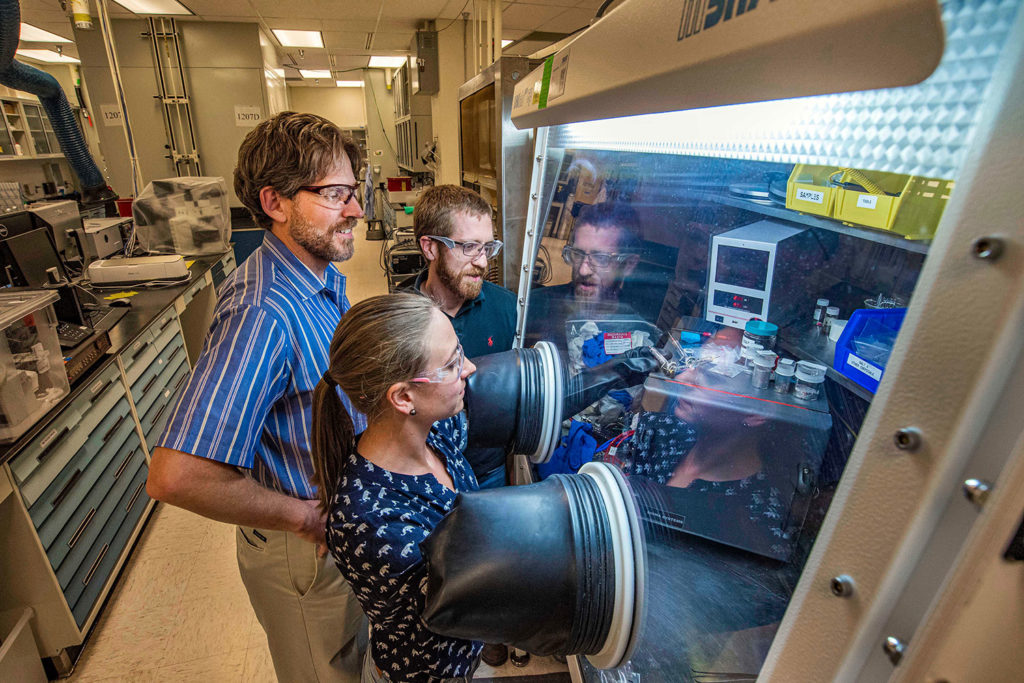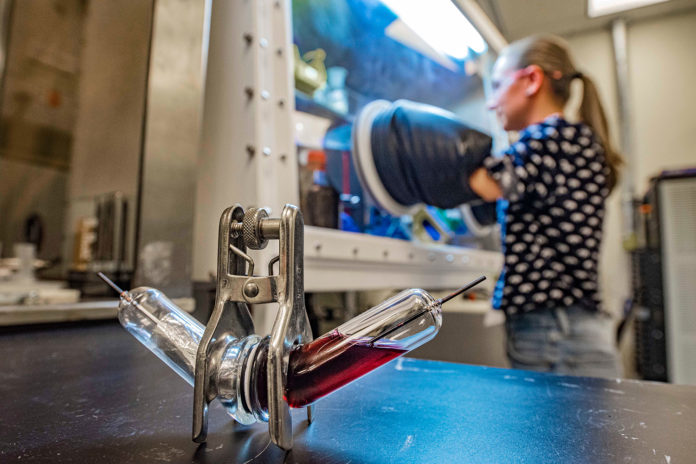Despite its many strengths, the expensive lithium battery technology falls short at storing vast amounts of energy in a cheap and efficient manner, which is very important when it comes to powering whole cities with renewable energy. “Molten salt batteries” look much more promising solution, which uses electrodes kept in a molten state with the help of high temperatures. But they also have their drawbacks, which do not allow them to take leading positions.
Now, researchers at Sandia National Laboratories have come up with a new design that addresses a number of these shortcomings. They also demonstrated a working molten salt battery that can be constructed far more cheaply while storing more energy than currently available versions.
“We’ve been working to bring the operating temperature of molten sodium batteries down as low as physically possible,” said Leo Small, the lead researcher on the project. “There’s a whole cascading cost saving that comes along with lowering the battery temperature. You can use less expensive materials. The batteries need less insulation, and the wiring that connects all the batteries can be a lot thinner.“
The new design allows the molten sodium battery to operate at 230 °F (110 °C), much lower than the current commercial sodium batteries that generally operate at 520 to 660 °F (270 to 350 °C). This required a significant reworking as the chemistries that work at high temperatures don’t lend themselves well to lower temperatures.

The new molten sodium battery consists of a liquid sodium metal plate that sits on the opposite side of a ceramic separator material to a liquid mixture of sodium iodide and a small amount of gallium chloride, which they call a catholyte. When energy is discharged from the new battery, the sodium metal produces sodium ions and electrons. On the other side, the electrons turn iodine into iodide ions. The sodium ions move across a separator to the other side, where they react with the iodide ions to form molten sodium iodide salt.
Sandia team’s small, lab-scale sodium-iodide battery was tested for eight months inside an oven, charging and discharging the battery more than 400 times. Additionally, at 3.6 volts, the new sodium-iodide battery has a 40% higher operating voltage than a commercial molten sodium battery. This voltage leads to higher energy density, and that means that potential future batteries made with this chemistry would need fewer cells, fewer connections between cells, and an overall lower unit cost to store the same amount of electricity.
“We were really excited about how much energy we could potentially cram into the system because of the new catholyte we’re reporting in this paper,” Gross added. “Molten sodium batteries have existed for decades, and they’re all over the globe, but no one ever talks about them. So, being able to lower the temperature and come back with some numbers and say, ‘this is a really, really viable system’ is pretty neat.”
The next step for the sodium-iodide battery project is to continue to tune and refine the catholyte chemistry to replace the gallium chloride component, which is very expensive, more than 100 times as expensive as table salt. The team says it would likely take five to 10 years to get sodium-iodide batteries to market, with most of the remaining challenges being commercialization challenges rather than technical challenges.
“This is the first demonstration of long-term, stable cycling of a low-temperature molten-sodium battery,” Spoerke said. “The magic of what we’ve put together is that we’ve identified salt chemistry and electrochemistry that allow us to operate effectively at 230 °F. This low-temperature sodium-iodide configuration is sort of a reinvention of what it means to have a molten sodium battery.
